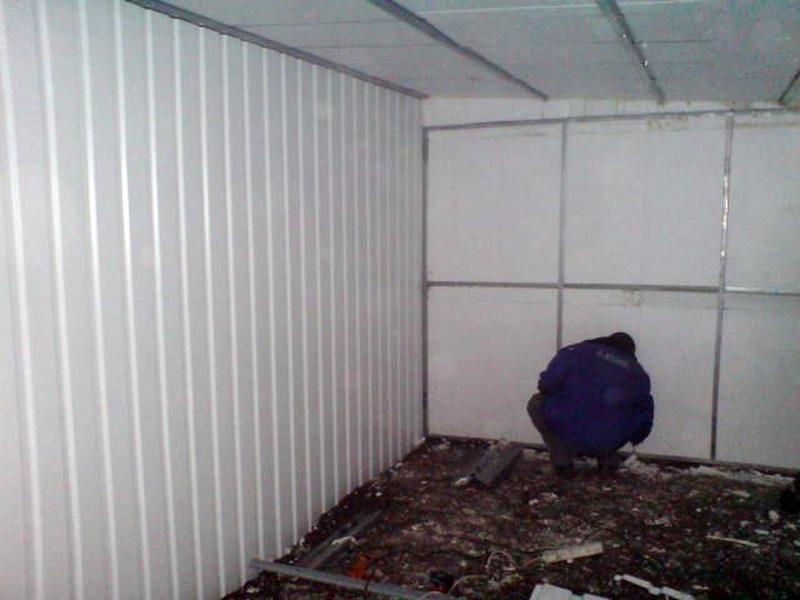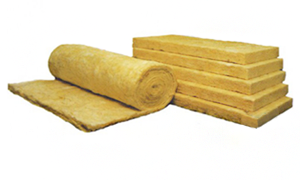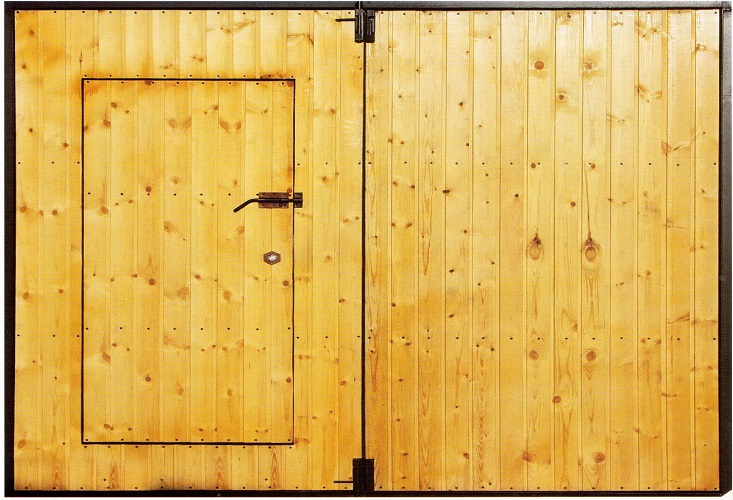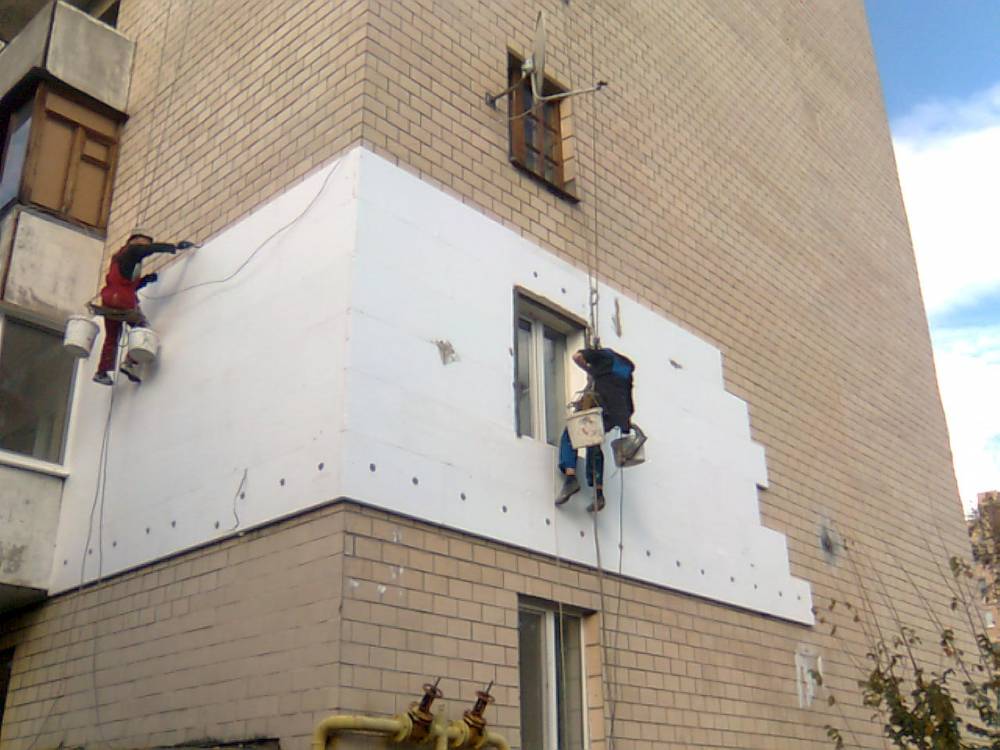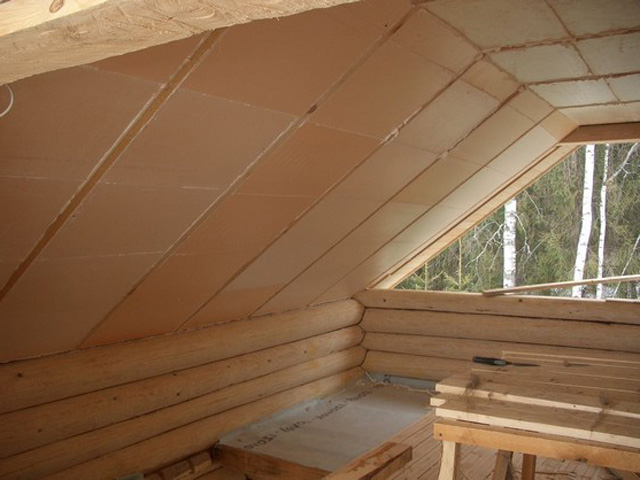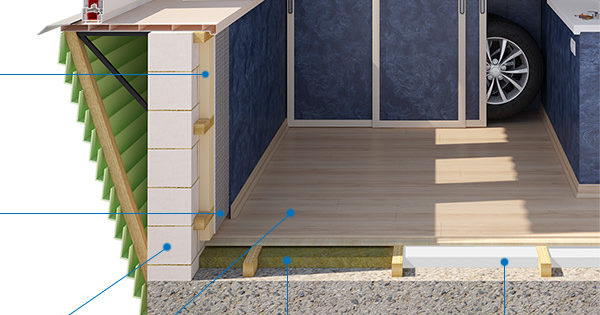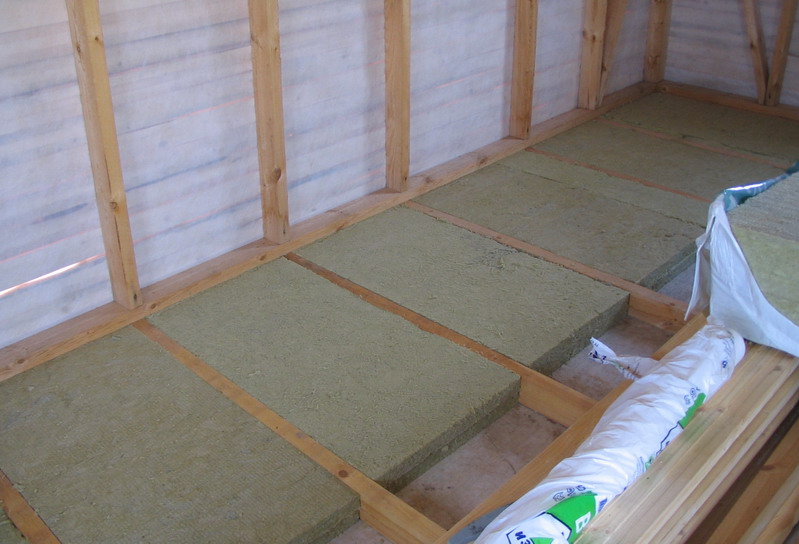5 options for insulation of the garage outside
Warm garage - The real dream of any car owner, because it will be comfortable there for the car itself and its driver. Not only is it very inconvenient to carry out any repair work in a cold garage in winter, the low temperature negatively affects the condition of the car and leads to its rapid damage. Half measures in the form heater turning on do not give absolutely nothing, since in a garage with thin walls, and they, as a rule, are just like that, the heat does not stay for a long time. If the condition of the car and the safety of its basic elements are important, then it is better to take care of the insulation in time. External insulation becomes the most effective, because in this case the dew point is shifted to the insulation, and excess moisture will not accumulate in the room itself. Such thermal insulation can be organized in several ways.
No. 1. Styrofoam
 Polyfoam - the most popular option for insulation of the garage, and use it for both indoor and outdoor work. External foam insulation is much more efficient and convenient. Firstly, the useful area of the garage is not taken away, and, secondly, there is no risk of moisture formation at the points of contact between the wall and the insulation, which often occurs with internal insulation. That is why it is not necessary to equip the forced ventilation system and constantly keep it turned on.
Polyfoam - the most popular option for insulation of the garage, and use it for both indoor and outdoor work. External foam insulation is much more efficient and convenient. Firstly, the useful area of the garage is not taken away, and, secondly, there is no risk of moisture formation at the points of contact between the wall and the insulation, which often occurs with internal insulation. That is why it is not necessary to equip the forced ventilation system and constantly keep it turned on.
Styrofoam is perfect for warming the walls of the garage from bricks, pleases with affordable price, lightness, therefore it does not burden the whole structure, it is as simple as possible to install: it is easy to cut, and plates can be attached to the walls even on their own, without involving specialists. This type of insulation is also interesting from the point of view of absolute neutrality to moisture, since it does not absorb it, it will not become a place for the development of fungus and mold. The foam also tolerates temperature extremes, it has good sound absorption, differs in a long service life.
There is a foam and some cons. So, it is better not to use it where heating from a stove or some equipment is possible. In this case, it is recommended to combine it with mineral wool, and it is even better to immediately purchase a foam filled with flame retardants, which will resist ignition and combustion. It should also be noted that the strength of the foam is not at a height, so the insulation layer immediately after its installation must be protected. Usually a fiberglass mesh is attached, and plaster is applied over it. On top of decorative plaster, it is better to use facade paints not on a nitro base, since they can damage the foam, depriving it of heat-insulating properties. Siding, moisture-proof GKL and TsSP and some other materials are also often used. It is worth noting that the sheet materials in this case are attached using the construction of the frame.
No. 2. Liquid polyurethane foam
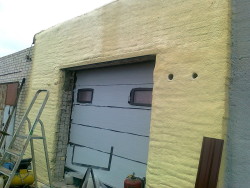 Warming sprayed polyurethane foam - this is one of the most modern wayswhich is almost devoid of flaws. In this case, the owner of the garage receives a monolithic layer of thermal insulation, which fills all the cracks and surface irregularities. This material has phenomenal indicators of thermal insulation, since its thickness of 1 cm can replace foam plastic with a thickness of 15 cm. It also has excellent sound insulation, because its cellular structure hardly conducts sounds.Polyurethane foam is not exposed to fire, after drying it does not emit substances harmful to health, and the process of its application does not take much time. In addition, this option is perfect in cases where the garage has a complex structure or some inaccessible places, where it is difficult to mount a cotton roll or a foam plate, but a sprayer with liquid polyurethane foam always crawls through. The material perfectly tolerates critically low and high temperatures, without being deformed at the same time, it has good adhesion to almost all surfaces, therefore it can be used with equal success for brick and metal garages. Plus, it is light and durable, which makes it the most attractive insulation at the moment.
Warming sprayed polyurethane foam - this is one of the most modern wayswhich is almost devoid of flaws. In this case, the owner of the garage receives a monolithic layer of thermal insulation, which fills all the cracks and surface irregularities. This material has phenomenal indicators of thermal insulation, since its thickness of 1 cm can replace foam plastic with a thickness of 15 cm. It also has excellent sound insulation, because its cellular structure hardly conducts sounds.Polyurethane foam is not exposed to fire, after drying it does not emit substances harmful to health, and the process of its application does not take much time. In addition, this option is perfect in cases where the garage has a complex structure or some inaccessible places, where it is difficult to mount a cotton roll or a foam plate, but a sprayer with liquid polyurethane foam always crawls through. The material perfectly tolerates critically low and high temperatures, without being deformed at the same time, it has good adhesion to almost all surfaces, therefore it can be used with equal success for brick and metal garages. Plus, it is light and durable, which makes it the most attractive insulation at the moment.
But unfortunately, and no drawbacks. Such material is not very cheap, and work on its application will require the involvement of professionals with special equipment. Another drawback is the fear of sunlight, therefore, with an external insulation of the garage, a dried layer of insulation must be additionally protected. It can be panels, plaster or the most ordinary paint: as a result, the garage and insulation will be protected and have an attractive appearance.
No. 3. Stone wool
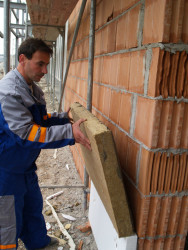 As known, mineral wool can be of several types: slag, glass wool and stone wool. These materials differ in the raw materials from which they are produced, and, consequently, in some properties. So, the most widely used is stone wool, which is most often referred to when it comes to mineral wool.
As known, mineral wool can be of several types: slag, glass wool and stone wool. These materials differ in the raw materials from which they are produced, and, consequently, in some properties. So, the most widely used is stone wool, which is most often referred to when it comes to mineral wool.
TOamenna wool - A great option for insulation of the garage outside. This is a material with a low coefficient of thermal conductivity, which perfectly resists high temperatures, which is important when it comes to insulation of the garage. In addition, stone wool can withstand the ingress of aggressive substances, retains sound well, has the effect of "breathing", has a high biological resistance. It is not difficult to handle such material, but for external insulation it is necessary to erect a frame, and since this insulation is afraid of water, it must be protected very much from external influences.
Rigid plates are suitable for external insulation than for internal insulation, and a material with a density of 200 kg / m3 is optimal. It is imperative to provide a waterproofing layer, otherwise after the first precipitation the mineral wool will crumple and lose most of its heat-insulating properties. Despite some disadvantages and the fact that stone wool is more expensive than polystyrene, this type of insulation remains the most popular when it comes to external thermal insulation of a garage.
Number 4. Glass wool
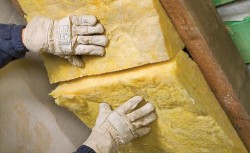 Glass wool, as mentioned above, is a type of stone wool, but still it is better to dwell on this type of insulation. His main advantage - the price, because it costs an order of magnitude cheaper than stone wool, and it is easy to transport this material, because it is vibration-resistant, and after delivery it will take its original form, even if it was tightly twisted into a roll. According to some properties, this insulation is not inferior to stone wool, having good thermal insulation performance, and many experts in terms of insulation efficiency do not see the difference between these materials, and therefore choose a cheaper option.
Glass wool, as mentioned above, is a type of stone wool, but still it is better to dwell on this type of insulation. His main advantage - the price, because it costs an order of magnitude cheaper than stone wool, and it is easy to transport this material, because it is vibration-resistant, and after delivery it will take its original form, even if it was tightly twisted into a roll. According to some properties, this insulation is not inferior to stone wool, having good thermal insulation performance, and many experts in terms of insulation efficiency do not see the difference between these materials, and therefore choose a cheaper option.
Trying to save money, you need to be aware that working with such material should be extremely careful. Yes, the installation of glass wool almost does not differ from the process of warming the garage with stone wool, because the construction of the frame will also be required. But at the same time, you will have to work extremely carefully, covering the body, eyes, face, hands and any other open areas. The structure of the glass wool is such that it includes many small needle-like particles that easily penetrate the skin, respiratory tract and eyes.If you follow all safety measures, then, in principle, you can call glass wool a good competitor to basalt wool. Naturally, the layer of such thermal insulation must be reliably covered with other materials that will protect the cotton itself from moisture, and the person from the negative effects of cotton.
No. 5. Warm plasters and paints
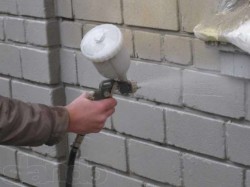 Warm plasters and paints are relatively new heat-insulating materials, which are best used in combination with other heaters. They are able to protect the garage also from the effects of snow and rain, and in some cases can even be used as an independent heater.
Warm plasters and paints are relatively new heat-insulating materials, which are best used in combination with other heaters. They are able to protect the garage also from the effects of snow and rain, and in some cases can even be used as an independent heater.
Warm paint outwardly no different from ordinary paint. By the way, it can also be used as a final layer of decoration when warming a garage with foam or mineral wool. 1 cm of a layer of warm paint is equal in heat insulation to 5 cm of mineral wool, and this is a very good indicator. Such a coating does not allow heat to leave the garage, not only preventing it, but also reflecting infrared rays back into the room, and this amazingly low coefficient of thermal conductivity is based on this property.
Warm paint “sticks” well to any surface, and you can apply it in any convenient way, for example, with a brush, roller or spray, so you can reliably insulate the most difficult and inaccessible places with it, and do all the work yourself, according to the instructions. Such paint protects metal surfaces from corrosion, it is not afraid of moisture, has a small weight, and perfectly resists sunlight - all those properties that are put forward to the external insulation. Moreover, it is an environmentally friendly and completely safe coating that does not burn, and when exposed to critically high temperatures, it can begin to smolder and decompose. The only minus of this option of warming is that the warm paint is not very cheap, and a lot of it will be needed.
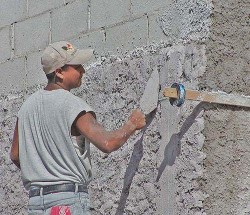 Warm plaster in terms of composition and method of application, it resembles the usual one, only some components are replaced here with similar ones, but with better thermal insulation. Most often, stucco is used with filler from vermiculite, and on sale you can also find a similar insulation based on sawdust, polystyrene foam, expanded clay aggregate, etc. This type of insulation can be applied to any surface, so the plaster is suitable for stone and metal garages. A nice bonus is that it is unnecessary to process the surface before applying it in any special way. Warm plaster has a good indicator of thermal insulation, is not afraid of moisture and sunlight, does not burn, mold does not develop in it. All this makes it a pretty good option for external insulation, but as an independent heat insulator it can only be used in individual cases. To achieve optimal thermal insulation performance in regions with harsh winters, you need to apply a decent layer of plaster, so it is better to combine it with another insulation (mineral wool or polystyrene), because a layer thicker than 5 cm will begin to crack and fall off over time.
Warm plaster in terms of composition and method of application, it resembles the usual one, only some components are replaced here with similar ones, but with better thermal insulation. Most often, stucco is used with filler from vermiculite, and on sale you can also find a similar insulation based on sawdust, polystyrene foam, expanded clay aggregate, etc. This type of insulation can be applied to any surface, so the plaster is suitable for stone and metal garages. A nice bonus is that it is unnecessary to process the surface before applying it in any special way. Warm plaster has a good indicator of thermal insulation, is not afraid of moisture and sunlight, does not burn, mold does not develop in it. All this makes it a pretty good option for external insulation, but as an independent heat insulator it can only be used in individual cases. To achieve optimal thermal insulation performance in regions with harsh winters, you need to apply a decent layer of plaster, so it is better to combine it with another insulation (mineral wool or polystyrene), because a layer thicker than 5 cm will begin to crack and fall off over time.

